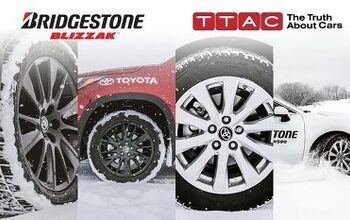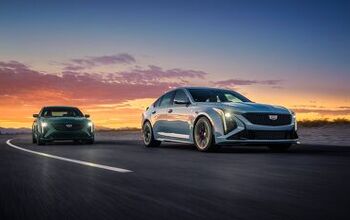QOTD: Anyone Else Getting Worried About Dodge?

Dodge recently announced that the iconic Charger and Challenger models would be sacrificed in the name of electrification next year — releasing the battery-powered, two-door Dodge Charger Daytona SRT Concept to show the public what might be on offer in the near future. But the language used felt somewhat noncommittal, as if the company was really just testing the waters to see what V8-obsessed Mopar fans were willing to tolerate. Meanwhile, Stellantis has opted to eliminate the brand’s high-performance SRT (Street and Racing Technology) division.
Executives have attempted to spin this as good for the company, suggesting that integrating Dodge’s performance-focused engineering team into the broader pool will mean better cars across the board. But I’m worried about my favorite American brand and am wondering if anyone else on the road feels similarly.
While we knew that the days of supercharged V8 were likely numbered thanks to government regulations, that also looked to be the case a decade earlier. In fact, Dodge became somewhat infamous for saying it would take emissions fines on the chin whenever it couldn’t purchase enough carbon credits and there was a stint where leadership basically scoffed at the idea of the brand ever building EVs. But that changed in 2020 when Tim Kuniskis (then heading FCA passenger cars) started suggesting electric vehicles would become a big part of Dodge’s future. And that seems to have accelerated since the 2021 FCA-PSA merger that created Stellantis.
“We are celebrating the end of an era — and the start of a bright new electrified future — by staying true to our brand,” explained Tim Kuniskis, chief executive officer of the Dodge brand. “At Dodge, we never lift, and the brand will mark the last of our iconic Charger and Challenger nameplates in their current form in the same way that got us here, with a passion both for our products and our enthusiasts that drives us to create as much uniqueness in the muscle car community and marketplace as possible.”
Dodge’s present plan is to build as many special edition Charger and Challenger models as possible before they’re discontinued in 2024. Considering how ancient the platform is, that makes some amount of sense. But they’re still relatively competitive when you peruse their sales numbers and arguably dominate a segment they have entirely to themselves — if you see the Chevy Camaro and Ford Mustang as different beasts.
But a future without them feels as though it would leave Dodge with a massive chasm in its already diminutive lineup. The only other vehicle the company sells right now is the Durango SUV and it’s similarly available with a series of increasingly powerful engines the automaker might stop producing. We know that the company is planning to reskin the Alfa Romeo Tonale and sell it for a few bucks shy of $30,000 as the Dodge Hornet. That seems a relatively safe bet so long as Alfa’s quality control doesn’t carry over. But tapping EVs to take up the slack left by the Charger and Challenger could backfire.
Dodge builds several of the best horsepower-per-dollar vehicles currently in existence. The brand has become synonymous with big, comfortable cars offering oodles of power at an impressively low price. But electrics don’t appear poised to fill that gap. As things currently stand, EVs tend to be small, utilitarian runabouts retailing around $32,000 or larger, faster, more-luxurious models priced north of $70,000. In order to offer something comparable to its outgoing models, Dodge would need to manufacture a full-sized electric capable of doing the standing ¼ mile in 12.8 seconds that’s also priced below $47,000.
Is it possible? Probably. Will it happen? Probably not.
Vehicle prices have been trending upward due to inflation and the collective breakdown of global supply chains. But the elevated value of specific commodities necessary for battery production means EV prices are outpacing their combustion-reliant rivals by a wide margin. By keeping around what is effectively a very old model, Dodge has managed to reduce overhead by saving on development costs. But that won’t be the case when it goes electric unless all future models will be re-badged products from Stellantis’ other nameplates.
Granted, leadership has said performance-oriented SRT models will continue being made. But, without a dedicated engineering team, something tells me the SRT badge will become akin to BMW’s M Sport — largely meaningless.
What will Dodge be left with after its hallmark models are discontinued? Will it become a dumping ground for re-badged products? Am I getting worried about nothing or are you also starting to fret over the brand’s nebulously presented future?
[Image: Dodge]
Become a TTAC insider. Get the latest news, features, TTAC takes, and everything else that gets to the truth about cars first by subscribing to our newsletter.

A staunch consumer advocate tracking industry trends and regulation. Before joining TTAC, Matt spent a decade working for marketing and research firms based in NYC. Clients included several of the world’s largest automakers, global tire brands, and aftermarket part suppliers. Dissatisfied with the corporate world and resentful of having to wear suits everyday, he pivoted to writing about cars. Since then, that man has become an ardent supporter of the right-to-repair movement, been interviewed on the auto industry by national radio broadcasts, driven more rental cars than anyone ever should, participated in amateur rallying events, and received the requisite minimum training as sanctioned by the SCCA. Handy with a wrench, Matt grew up surrounded by Detroit auto workers and managed to get a pizza delivery job before he was legally eligible. He later found himself driving box trucks through Manhattan, guaranteeing future sympathy for actual truckers. He continues to conduct research pertaining to the automotive sector as an independent contractor and has since moved back to his native Michigan, closer to where the cars are born. A contrarian, Matt claims to prefer understeer — stating that front and all-wheel drive vehicles cater best to his driving style.
More by Matt Posky
Latest Car Reviews
Read moreLatest Product Reviews
Read moreRecent Comments
- MaintenanceCosts This engine is a lot less interesting in a nearly-6000-pound Durango than in a 4400-pound Charger. I’ve never understood why this gen of Durango weighs in as heavy as a Wagoneer.
- Aja8888 I knew this would happen sooner or later. Others will follow.
- ToolGuy I read in TTAC that EVs are useless and dead, just sayin.
- ToolGuy I am starting to question the love for our planet expressed by the oligopolists. Have I been lied to?
- NigelShiftright My favorite color on any current car is the "McLaren orange" on Subaru Crosstreks. Unfortunately I am about four inches too tall to fit behind the wheel of one.


































Comments
Join the conversation
SRT division had to be integrated into "regular" engineering because to do a performance EV from scratch, they need to be there at the beginning. You can't go back in and move major components around to fit a 3rd or 4th electric motor. This is the exact reason they gave and it makes perfect sense. They also aren't going Full EV. They will have the turbo 6's as well (+ turbo 6's with electric assist), but they need an AWD full BEV to beat the Plaid.
They have become automotive excrement. Even hapless GM is better. Without their muscle cars this division is worthless.